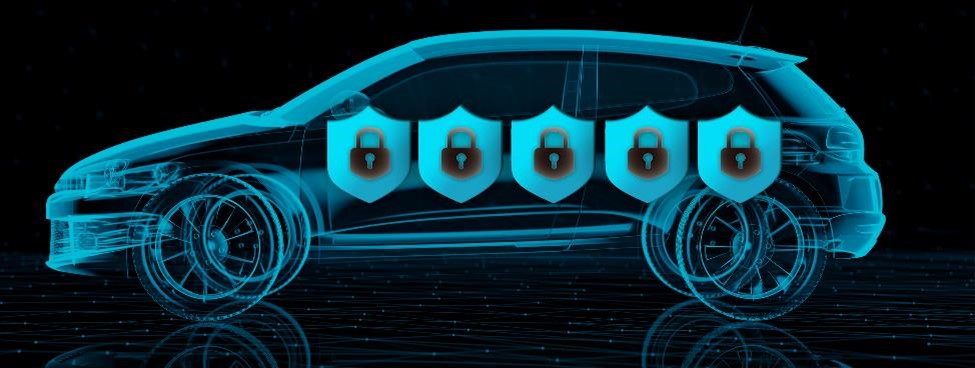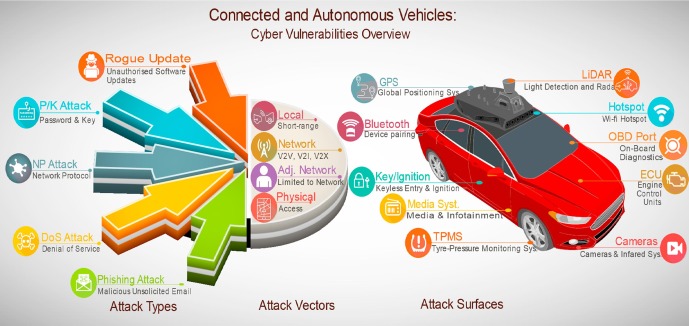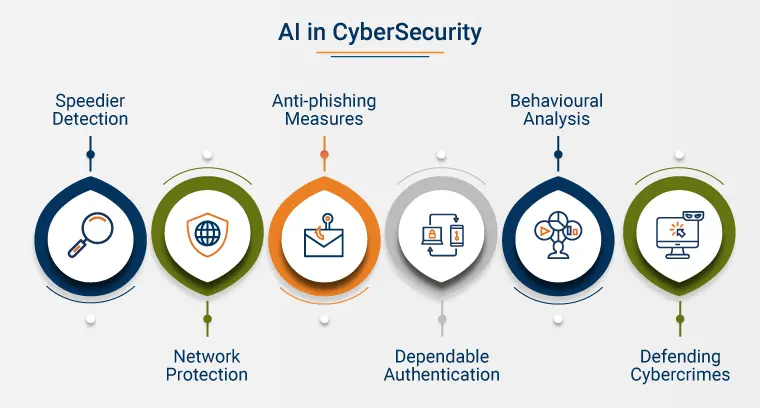
As technology advances, so does the threat of cyber attacks on vehicles. But with the power of AI, you can detect and prevent hacks in real time. These systems use machine learning to enhance automotive security, providing you with peace of mind on the road.
In this article, you’ll learn the benefits and current trends of AI-driven intrusion detection systems and keep your car and data safe.
Key Takeaways
- Rising Cyber Attacks: Technological advancements and the increased connectivity of cars have led to a surge in cyber attacks. These hacks can lead to unauthorized control over vehicle systems and potentially compromise personal information.
- AI-Driven Intrusion Detection Systems: AI and machine learning play a pivotal role in recognizing and neutralizing cyber threats in real time. Any deviation from regular traffic patterns can be perceived as a potential intrusion, enabling a fast response.
- Benefits of AI in Cybersecurity: Real-time threat detection, behavioral analysis, and adaptive defense mechanisms make AI indispensable in detecting and preventing vehicle hacks. These AI systems ensure a swift and efficient response to any irregularities.
- The Role of Machine Learning: A subset of AI, machine learning can boost car security in ways such as anomaly detection, behavioral profiling, and threat intelligence. It is capable of recognizing potential security breaches and indicating them to the concerned authorities.
- Current Trends in AI Security: Advanced machine learning algorithms, blockchain technology, 5G, and edge computing are emerging trends in AI-enhanced intrusion detection. These advancements promise to make the future of automotive security even more robust.
The Growing Threat of Cyber Attacks
You must be aware of the significant increase in cyber attacks targeting connected cars. As technology advances and cars become more connected, they're also becoming more vulnerable to malicious hackers.
Gone are the days when car theft involved hotwiring or breaking into a physical vehicle. Now, hackers can gain unauthorized access to your car's systems, manipulate its controls, and even take control of the vehicle remotely.

Connected cars are equipped with various systems that communicate with each other and external networks. These systems, known as the Internet of Things (IoT), include features like GPS navigation, entertainment systems, and even autonomous driving capabilities.
While these advancements offer convenience and improved safety, they also create new opportunities for cybercriminals.
Cyber attacks on connected cars can have serious consequences. Hackers can potentially disable your car's brakes, tamper with its steering, or even shut down its engine while you're driving.
They can also gain access to your personal information stored in the car's systems, such as your location history, contact details, and even financial data.
Fortunately, just as cars evolve in comfort and performance, they're also advancing in terms of security. A quick search on the connected car marketplace via CoPilot can give you insights into vehicles with advanced cybersecurity features and AI-driven intrusion detection systems, which we'll discuss in the following sections.
Understanding AI-Driven Intrusion Detection Systems
To understand AI-driven intrusion detection systems, it's important to grasp their fundamental principles and functionalities. These systems are designed to protect connected cars from cyber attacks by constantly monitoring and analyzing the vehicle's network traffic for any suspicious activities.
By leveraging artificial intelligence and machine learning algorithms, these systems can detect and identify potential intrusions in real time, allowing for immediate response and mitigation.

The key principle behind AI-driven intrusion detection systems is anomaly detection. These systems establish a baseline behavior for the vehicle's network by analyzing normal traffic patterns.
Any deviation from this baseline is flagged as a potential intrusion. To achieve this, the AI algorithms learn and adapt to the changing network environment, ensuring accurate detection of anomalies.
Functionally, AI-driven intrusion detection systems rely on a multi-layered approach. They employ various techniques such as signature-based detection, which involves comparing network traffic against a database of known attack patterns, and behavioral analysis, which involves monitoring for unusual network behaviors.
Additionally, these systems utilize machine learning algorithms to continuously improve their detection capabilities over time.
Furthermore, AI-driven intrusion detection systems can provide real-time alerts to the vehicle's owner or an authorized security monitoring center. This allows for prompt investigation and response to potential cyber threats, preventing any unauthorized access or manipulation of the vehicle's systems.
Benefits of AI in Detecting and Preventing Hacks
Artificial Intelligence has revolutionized the field of cybersecurity, providing advanced capabilities to identify and mitigate potential threats. With AI, you can detect and prevent hacks in connected cars more effectively.
Here are three reasons why AI is instrumental in detecting and preventing hacks in connected cars:
1. Real-time threat detection
Connected cars generate an enormous amount of data, making it challenging for traditional security systems to analyze and identify potential threats in real time. However, AI-powered intrusion detection systems can swiftly analyze vast volumes of data, enabling them to detect suspicious activities and anomalous behavior instantaneously.
This capability allows for immediate response and mitigation, reducing the risk of successful hacks.
2. Behavioral analysis
AI-driven systems can learn and understand the normal behavior patterns of connected cars and their components. By continuously analyzing data, AI algorithms can establish baseline behavior and detect any deviations that may indicate a potential hack.
This proactive approach enables early detection of intrusion attempts, minimizing the impact on the vehicle's functionality and ensuring the safety of its occupants.
3. Adaptive defense mechanisms
Hackers are constantly evolving their techniques, making it essential for intrusion detection systems to adapt and evolve as well. AI-powered systems can learn from new attack patterns and update their algorithms to stay one step ahead of hackers.
By continuously improving their defense mechanisms, AI-driven systems can effectively counter emerging threats and provide robust protection for connected cars.
Real-Time Monitoring and Alert Systems
The real-time monitoring aspect of the system ensures that any unauthorized access or malicious activities are detected and addressed immediately.
As soon as the system detects any suspicious activity, it triggers an alert to notify the car owner or relevant authorities. These alerts can be in the form of notifications on a mobile app or messages sent to the owner's phone, allowing them to take immediate action.
The real-time monitoring and alert systems provide peace of mind to car owners, knowing that their vehicles are constantly being monitored for any suspicious activities.
This not only enhances the security of connected cars but also instills confidence in the users who can rely on the system to detect and prevent any potential cyber threats.
Enhancing Automotive Security With Machine Learning
Machine learning, a subset of artificial intelligence, can provide advanced capabilities to detect and prevent security threats in connected cars. Here are three ways machine learning can enhance automotive security:
1. Anomaly detection
Machine learning algorithms can be trained to identify abnormal patterns or behaviors that deviate from the expected norm.
By analyzing vast amounts of data collected from various sensors and systems in a connected car, machine learning models can learn to recognize potential security breaches, such as unauthorized access attempts or abnormal network traffic.
This proactive approach enables early detection and timely response to potential security threats.
2. Behavioral profiling
Machine learning algorithms can create profiles of normal behavior for each connected car.
ML models establish a baseline of normal activity by continuously monitoring and analyzing the behavior of different car systems, including the infotainment system, engine, and communication networks.
Any deviation from this baseline can trigger an alert, indicating a potential security breach or malicious activity.
3. Threat intelligence
Machine learning can analyze data from security research, vulnerability databases, and threat intelligence feeds. So these machine learning models can stay updated on the latest attack techniques and patterns. This knowledge can be used to enhance the detection capabilities of intrusion detection systems, enabling them to effectively identify and mitigate new and evolving security threats.
Trends in AI-Driven Intrusion Detection Systems
As digital landscapes continue to shift and evolve, so too must our defenses against hackers and potential vulnerabilities. In the race to stay ahead, certain trends in AI-driven intrusion detection systems have emerged:
- Advanced Machine Learning Algorithms: These sophisticated algorithms are capable of real-time data analysis, identifying anomalies and red flags. Continually learning from new information, these algorithms can adjust and enhance their detection capabilities, making them an essential element in identifying potential security breaches.
- Integration of Blockchain Technology: Blockchain provides a decentralized, transparent platform that is notoriously difficult for hackers to infiltrate or alter. In implementing blockchain within intrusion detection systems, data integrity is easier to validate and the accuracy of the identified threats is ensured.
- Rise of 5G Technology: The emergence of 5G serves as a game changer for AI-driven intrusion detection systems. With faster and more reliable connectivity, real-time communication between interconnected entities, like vehicles, and the central system is achievable. This improves the speed of detection and response to potential threats, thereby ramping up overall security measures.
- Use of Edge Computing: The migration towards edge computing, where data processing happens close to its source, is anticipated to gain greater momentum in the future. This move decreases latency and boosts response times. With AI-driven intrusion detection systems utilizing edge computing, data is analyzed swiftly at the fringes, enabling quicker threat detection and reaction.
Conclusion
AI-driven intrusion detection systems play a crucial role in protecting connected cars from cyber attacks. With real-time monitoring and alert systems, these advanced technologies can detect and prevent hacks, ensuring the safety and security of vehicles and their occupants.
As machine learning continues to advance, the future of automotive security looks promising, with even more effective and efficient AI-driven intrusion detection systems on the horizon. Stay one step ahead of hackers with AI-powered protection for your connected car.
Share this post
Leave a comment
All comments are moderated. Spammy and bot submitted comments are deleted. Please submit the comments that are helpful to others, and we'll approve your comments. A comment that includes outbound link will only be approved if the content is relevant to the topic, and has some value to our readers.

Comments (0)
No comment